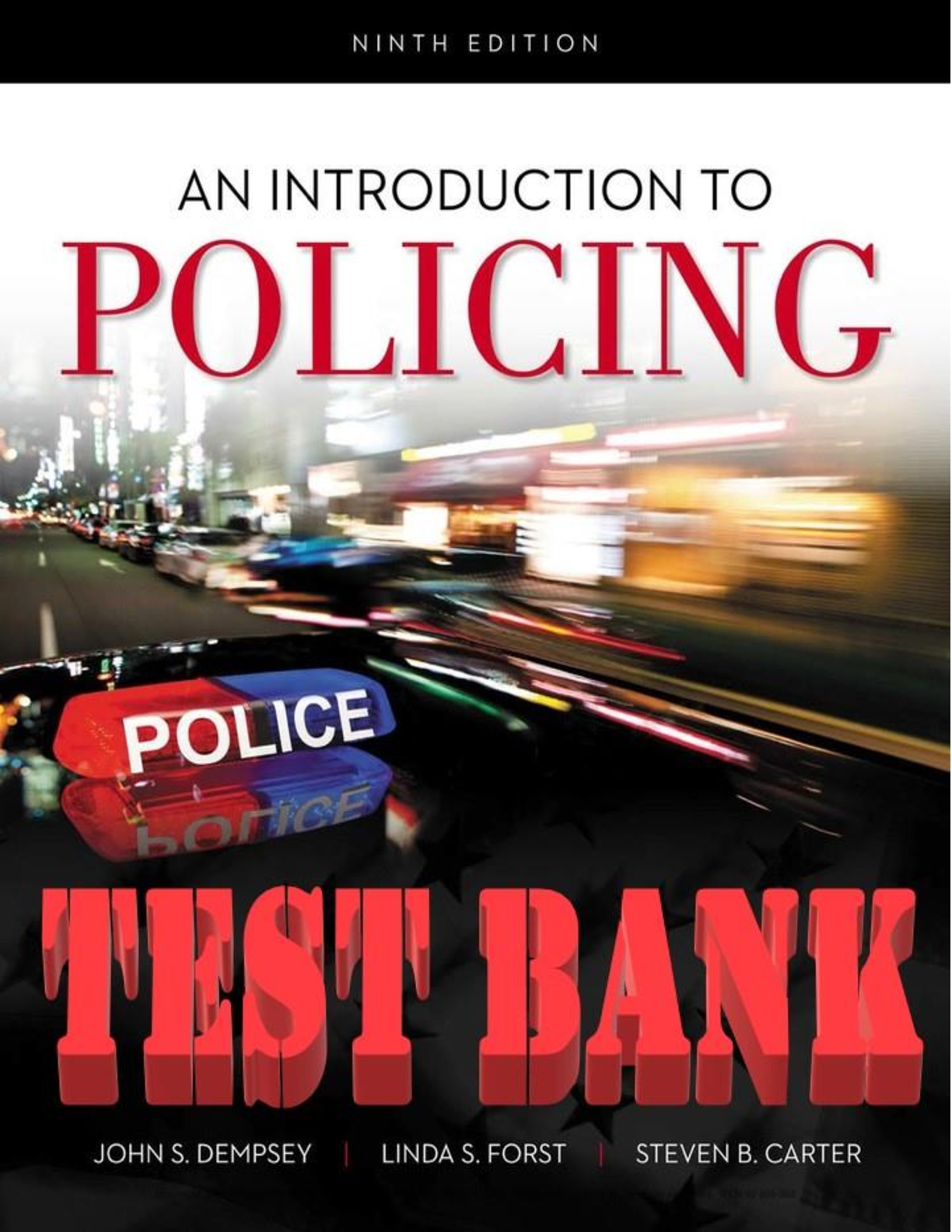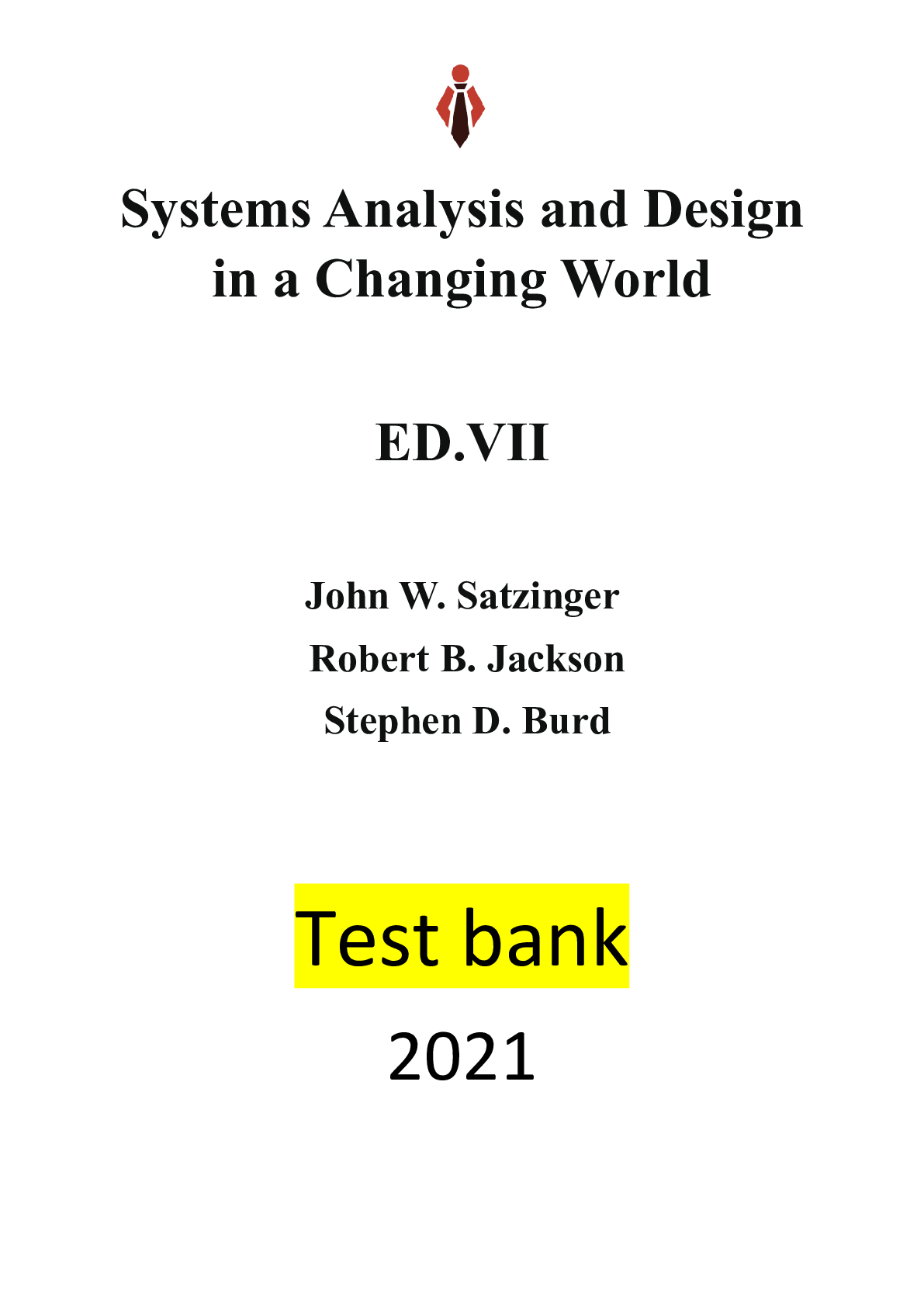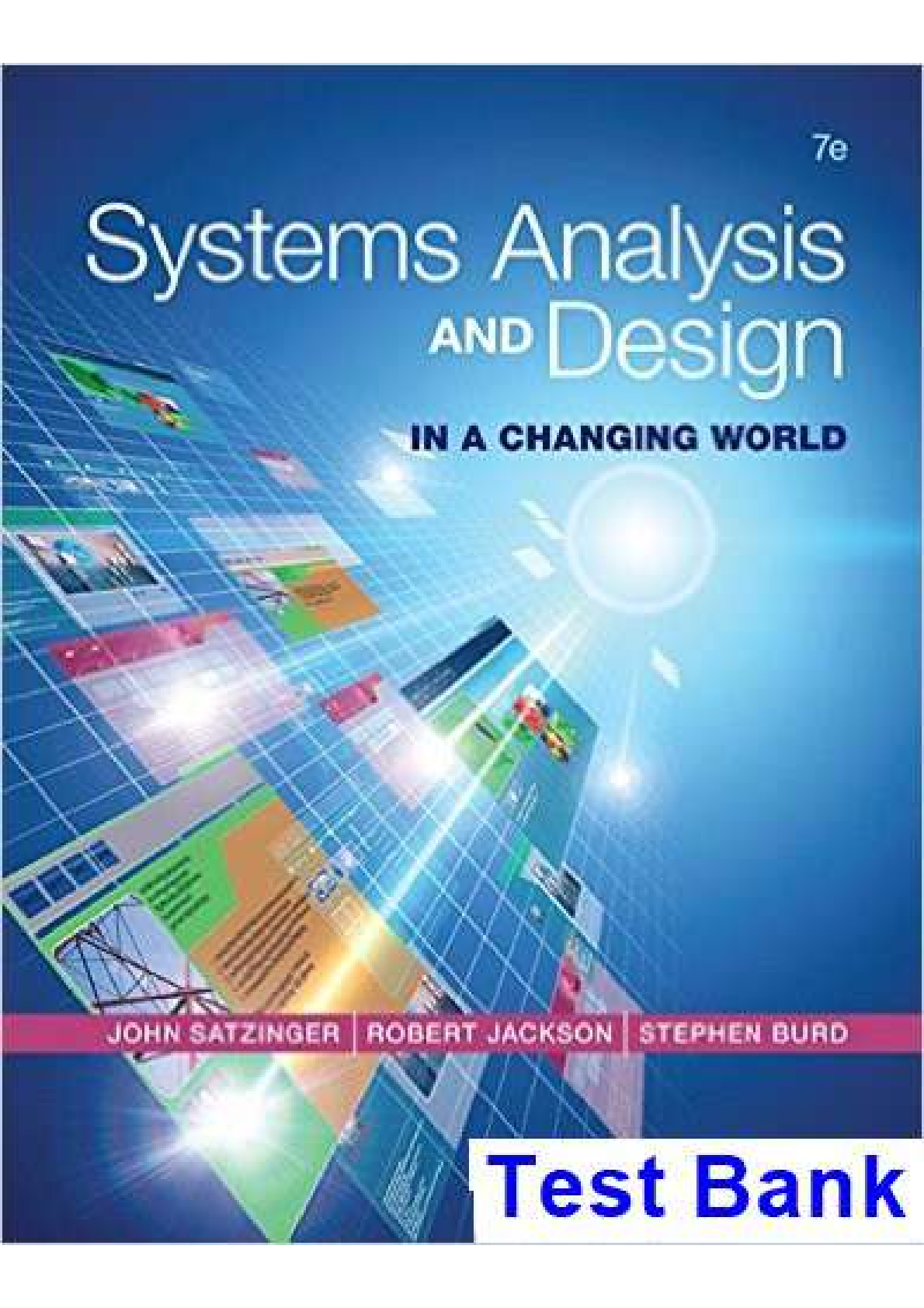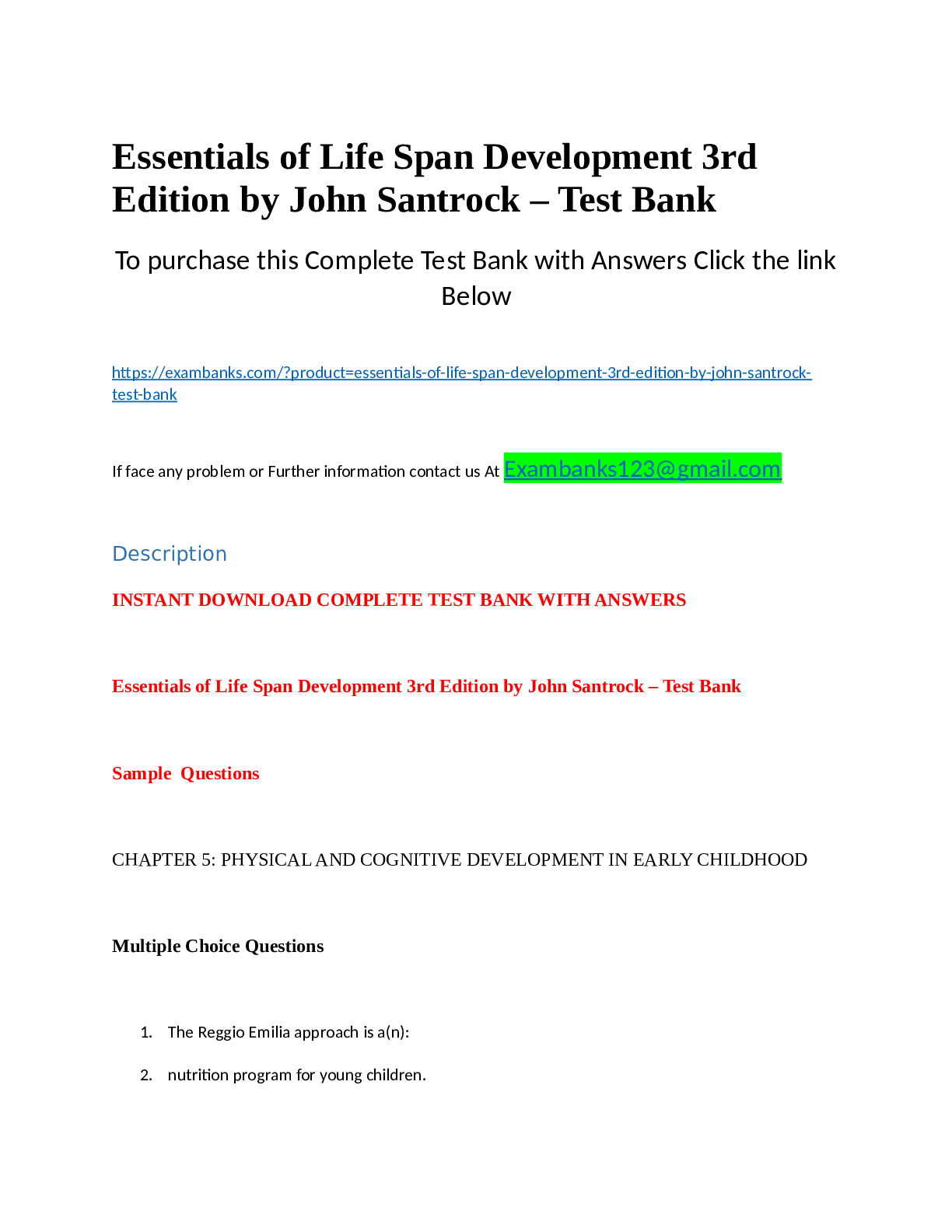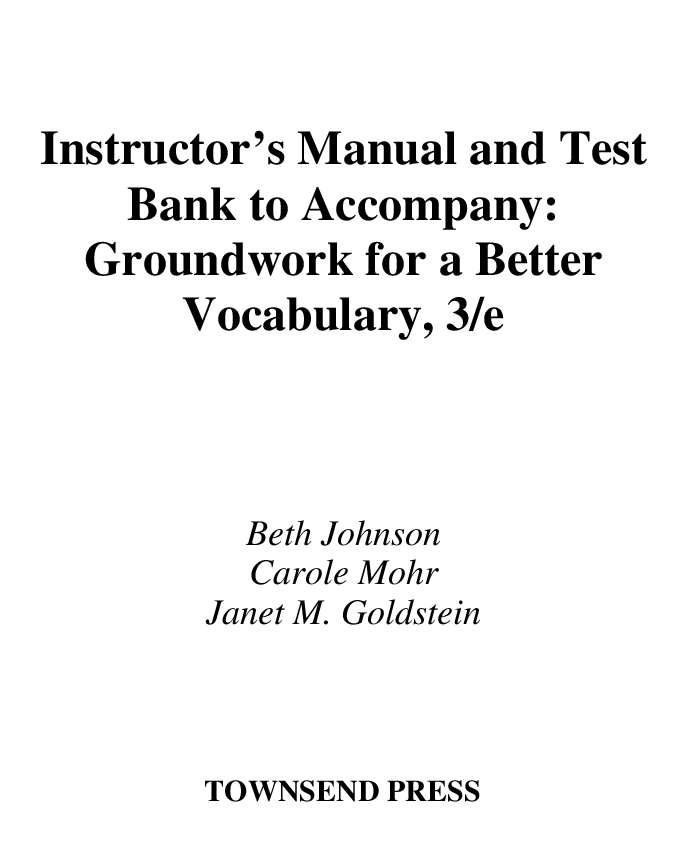Education > TEST BANKS > Test Bank For Criminal Procedure From First Contact to Appeal, 7th Edition by John L. Worrall (All)
Test Bank For Criminal Procedure From First Contact to Appeal, 7th Edition by John L. Worrall
Document Content and Description Below
Test Bank For Criminal Procedure From First Contact to Appeal, 7th Edition by John L. Worrall-1) The most important source of rights applying to criminal procedure is/are: A) Court decisions B) The ... U.S. Constitution C) State constitutions D) Statutes Answer: B Page Ref: 2 Objective: Summarize the constitutional basis for criminal procedure. Level: Basic 2) There are five constitutional amendments that are of special importance to criminal procedure: the Fourth, Fifth, Sixth, Eighth, and Fourteenth. Which of these is the most well-known source of rights in criminal procedure? A) Fourth Amendment B) Fifth Amendment C) Sixth Amendment D) Eighth Amendment Answer: A Page Ref: 3 Objective: Summarize the constitutional basis for criminal procedure. Level: Basic 3) Which statement is true of the Fourth Amendment? A) It protects from cruel and unusual punishment. B) It provides for a speedy and public trial, impartial jury, confrontation, compulsory process, and assistance or counsel. C) It provides protection from double jeopardy and self-incrimination and for grand jury indictment in serious crimes. D) It protects from unreasonable searches and seizures. Answer: D Page Ref: 3 Objective: Summarize the constitutional basis for criminal procedure. Level: Basic 216 4) Which statement is true of the Fifth Amendment? A) It protects from unreasonable searches and seizures. B) It provides protection from double jeopardy and self-incrimination and for grand jury indictment in serious crimes. C) It provides for a speedy and public trial, impartial jury, confrontation, compulsory process, and assistance or counsel. D) It includes the so-called due process clause, which has been used to incorporate various other rights described in the Bill of Rights. Answer: B Page Ref: 4 Objective: Summarize the constitutional basis for criminal procedure. Level: Basic 5) Which statement is true of the Sixth Amendment? A) It protects from unreasonable searches and seizures. B) It includes the so-called due process clause, which has been used to incorporate various other rights described in the Bill of Rights. C) It protects from cruel and unusual punishment. D) It provides for a speedy and public trial, impartial jury, confrontation, compulsory process, and assistance or counsel. Answer: D Page Ref: 4 Objective: Summarize the constitutional basis for criminal procedure. Level: Basic 6) Which statement is true of the Eighth Amendment? A) It protects from cruel and unusual punishment. B) It protects from unreasonable searches and seizures. C) It includes the so-called due process clause, which has been used to incorporate various other rights described in the Bill of Rights. D) It provides for a speedy and public trial, impartial jury, confrontation, compulsory process, and assistance or counsel. Answer: A Page Ref: 4 Objective: Summarize the constitutional basis for criminal procedure. Level: Basic 7) Which statement is true of the Fourteenth Amendment? A) It provides protection from double jeopardy and self-incrimination and for grand jury indictment in serious crimes. B) It provides for a speedy and public trial, impartial jury, confrontation, compulsory process, and assistance or counsel. 217 C) It includes the so-called due process clause, which has been used to incorporate various other rights described in the Bill of Rights. D) It protects from cruel and unusual punishment. Answer: C Page Ref: 4 Objective: Summarize the constitutional basis for criminal procedure. Level: Basic 8) The due process clause consists of two types of due process: substantive and procedural. Substantive due process refers to: A) Procedural fairness B) Protection from arbitrary and unreasonable action on the part of state officials C) Exemption from complicity by government officials D) None of the above Answer: B Page Ref: 4 Objective: Summarize the constitutional basis for criminal procedure. Level: Intermediate 9) The total incorporation perspective can be best described as the view that: A) The Fourteenth Amendment’s due process clause incorporates the entire Bill of Rights B) Protections listed in the Bill of Rights should be incorporated C) Not just the whole Bill of Rights, but other rights (e.g., privacy) should be incorporated D) Fundamental rights should be incorporated Answer: A Page Ref: 6 Objective: Summarize the constitutional basis for criminal procedure. Level: Intermediate 10) Which view of incorporation favors incorporation of certain protections enumerated in the Bill of Rights, but not all of them? It deems certain rights as being more critical or fundamental than others. A) Total Incorporation B) Selective Incorporation C) Total Incorporation Plus D) Case-by-Case Incorporation Answer: B Page Ref: 6 Objective: Summarize the constitutional basis for criminal procedure. Level: Intermediate 218 11) Which incorporation perspective has arguably “won out” over the others? A) Total Incorporation B) Selective Incorporation C) Total Incorporation Plus D) Case-by-Case Incorporation Answer: B Page Ref: 6 Objective: Summarize the constitutional basis for criminal procedure. Level: Basic 12) A precedent is a rule of case law that is binding on all lower courts and the court that issued it. The courts will defer to prior decisions based on a similar set of facts and legal questions. This doctrine is known as: A) Res Gestae B) Scire Feci C) Stare Decisis D) Suo Motu Answer: C Page Ref: 7 Objective: Explain the importance of precedent. Level: Basic 13) When a decision does not apply to the current facts, a court will , saying, in effect, that because the facts of the present case are different, the case cannot be decided the same way. A) Distinguish the case B) Use case precedent C) Judge decision D) Enact case law Answer: A Page Ref: 7 Objective: Explain the importance of precedent. Level: Basic 14) The theory world and real world can differ for which of the following reasons? A) The Supreme Court sometimes makes decisions on excruciatingly detailed matters that have almost no applicability to most law enforcement officers most of the time. B) The Supreme Court frequently hands down decisions that would seem to have dramatic effects on the nature of law enforcement, but actually involve issues that are already being addressed by many police agencies. C) What the courts say and what the police do can differ simply as a consequence of some aspect of the U.S. legal system. D) All of the above 219 Answer: D Page Ref: 8 Objective: Compare the theory of criminal procedure to the reality. Level: Intermediate [Show More]
Last updated: 5 months ago
Preview 5 out of 232 pages

Loading document previews ...
Buy this document to get the full access instantly
Instant Download Access after purchase
Buy NowInstant download
We Accept:

Reviews( 0 )
$14.50
Can't find what you want? Try our AI powered Search
Document information
Connected school, study & course
About the document
Uploaded On
Feb 02, 2025
Number of pages
232
Written in
Additional information
This document has been written for:
Uploaded
Feb 02, 2025
Downloads
0
Views
25

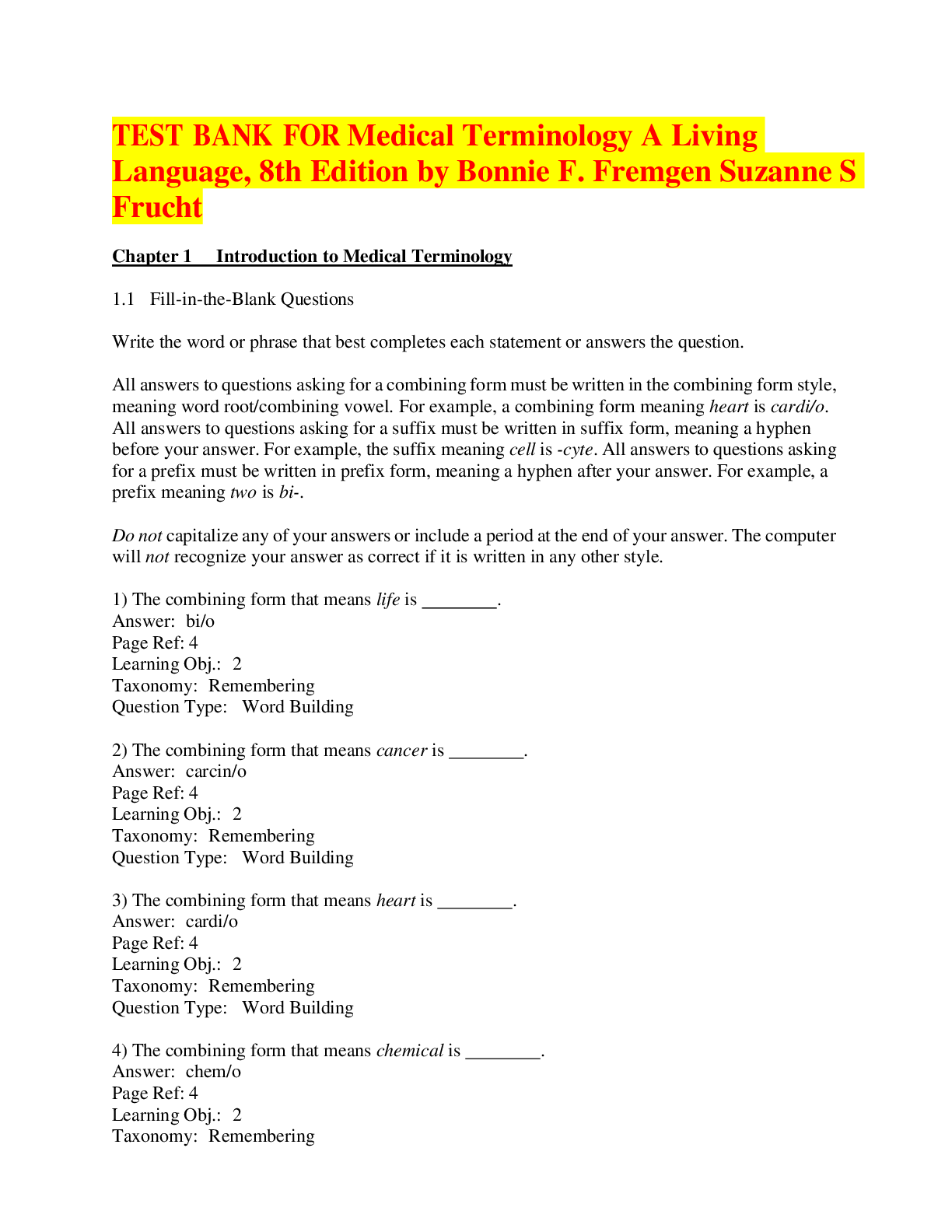
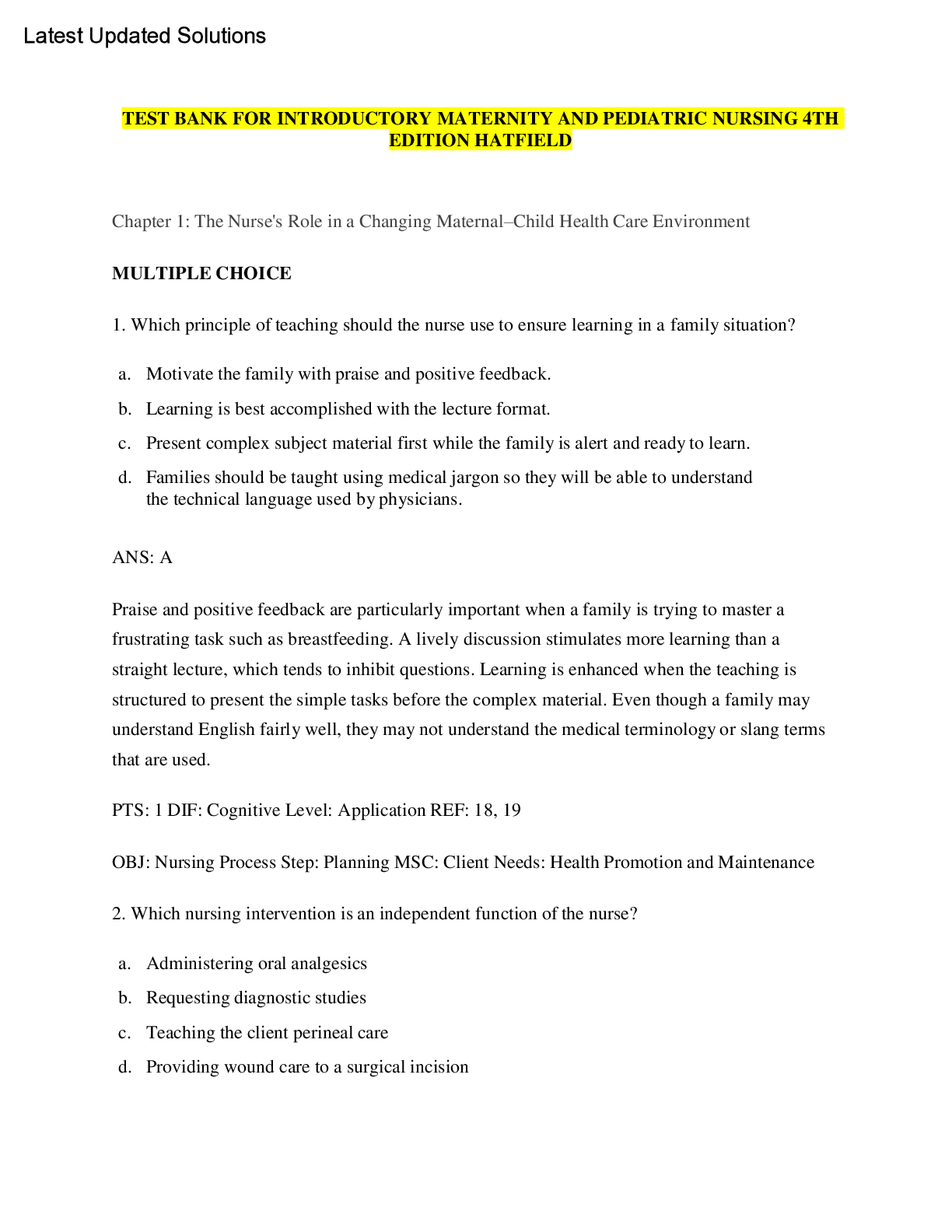



_compressed.png)
.png)
.png)

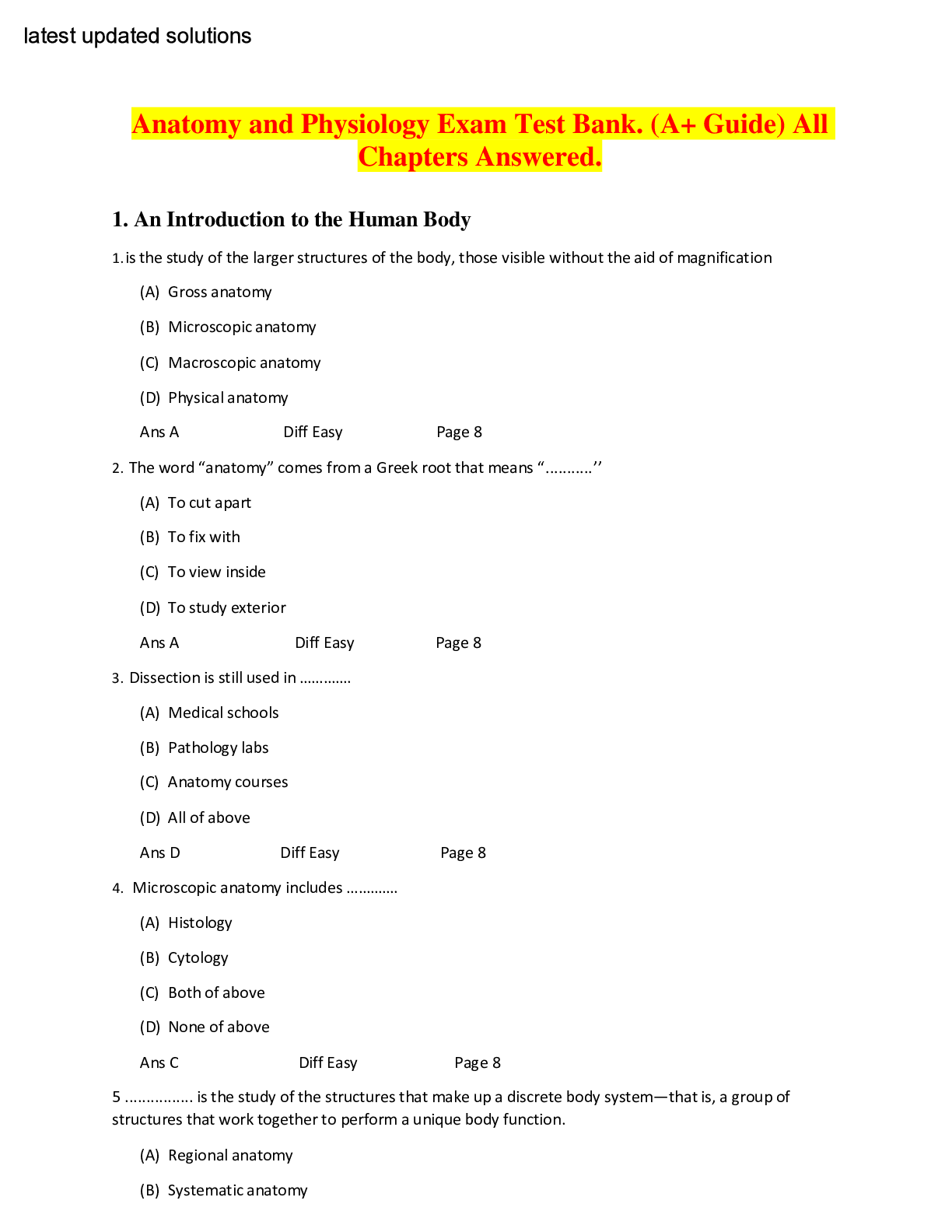
.png)

